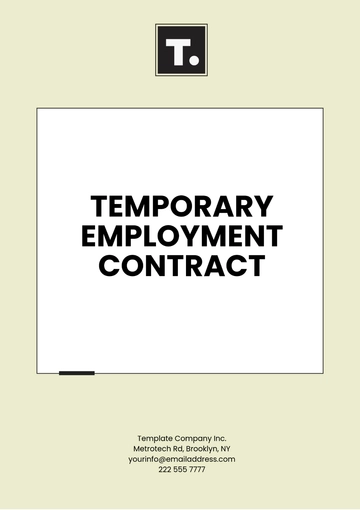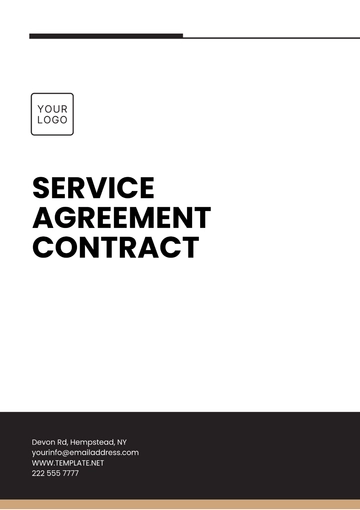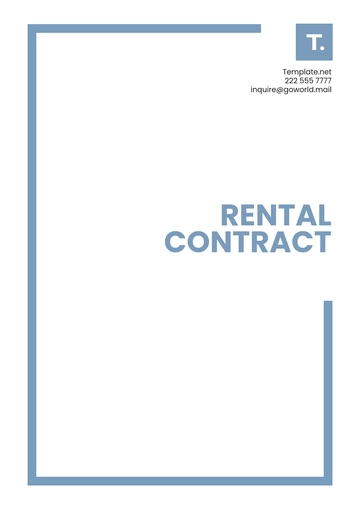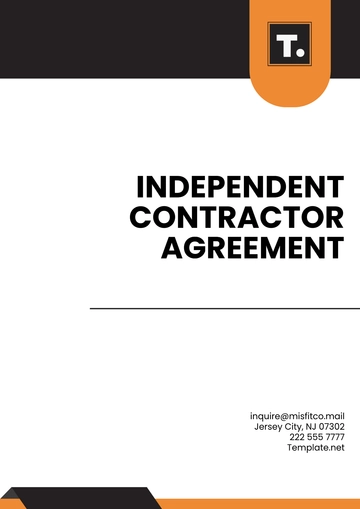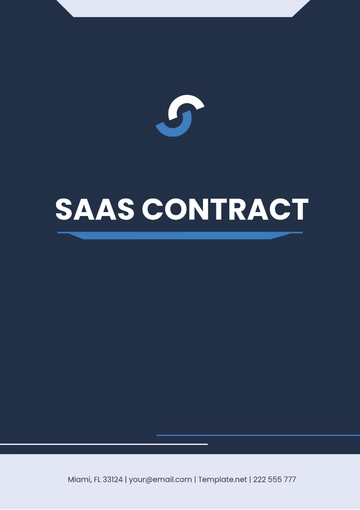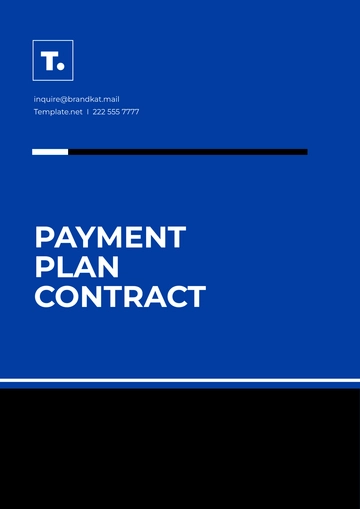Free Legal Contract Lifecycle Management Guide
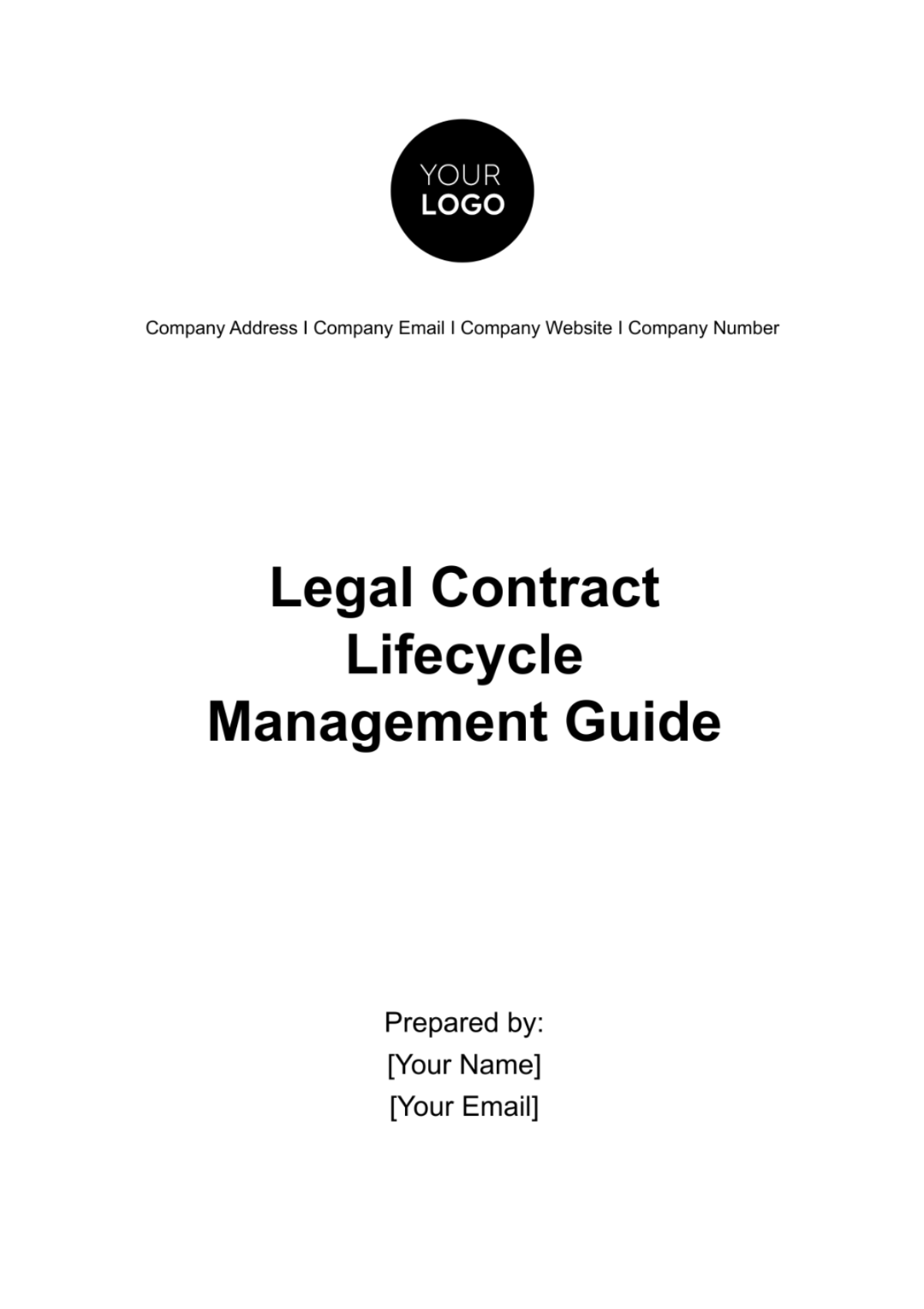
I. Introduction
Welcome to the Legal Contract Lifecycle Management Guide. This comprehensive resource is tailored to assist legal professionals, contract managers, and other stakeholders involved in managing contracts throughout their lifecycle. By following the guidance provided in this guide, you will gain valuable insights into best practices for drafting, negotiating, executing, and managing contracts effectively. Proper contract management is essential for mitigating risks, ensuring compliance with legal and regulatory requirements, and maximizing the value derived from contractual relationships. Whether you are a seasoned legal counsel or a novice contract manager, this guide aims to equip you with the knowledge and tools necessary to navigate the complexities of contract lifecycle management successfully.
II. Contract Creation
Preparing Contract Templates
To streamline the contract creation process, it is essential to develop standardized contract templates tailored to various types of agreements commonly used within your organization. These templates should encompass essential clauses, terms, and conditions relevant to specific contract types while allowing for flexibility to accommodate unique circumstances. By utilizing standardized templates, you can ensure consistency in contract language, reduce the time required for drafting, and minimize the risk of errors or omissions in contract term
Drafting Contract Terms
When drafting contract terms, clarity, precision, and completeness are paramount to avoid ambiguity and potential disputes down the line. Clearly define the rights, obligations, and responsibilities of each party involved, including specifics such as deliverables, milestones, payment terms, and dispute resolution mechanisms. Take into account relevant legal requirements, industry standards, and best practices to ensure that contract terms adequately protect the interests of your organization while fostering mutual understanding and cooperation between parties.
Defining Roles and Responsibilities
Assigning clear roles and responsibilities for contract drafting, review, and approval is crucial to ensure accountability and efficiency throughout the contract lifecycle. Designate individuals or departments responsible for overseeing the contract management process, including negotiating terms, obtaining necessary approvals, and ensuring compliance with internal policies and external regulations. Establishing a well-defined workflow and communication channels will help streamline collaboration among stakeholders and facilitate timely decision-making at each stage of the contract lifecycle.
III. Contract Negotiation
Identifying Key Negotiable Terms
Effective contract negotiation requires identifying and prioritizing key terms and conditions that are open to negotiation based on the significance of the contract and the parties' interests. These may include pricing, payment terms, delivery schedules, indemnification provisions, and intellectual property rights, among others. By understanding the relative importance of each negotiable term and seeking common ground, parties can work towards achieving mutually beneficial outcomes while preserving the overall integrity and objectives of the contract.
Conducting Negotiations
Successful contract negotiation relies on open, transparent communication and a collaborative approach to resolving differences and reaching consensus on contentious issues. Establish a constructive dialogue with the other party to discuss concerns, explore alternatives, and find creative solutions that meet the needs and objectives of both sides. Document all discussions, proposed changes, and counteroffers exchanged during the negotiation process to maintain a clear record of the parties' intentions and commitments.
Documenting Changes
Throughout the negotiation process, it is essential to keep track of all changes made to the contract and ensure that the final agreement accurately reflects the agreed-upon terms and conditions. Utilize version control mechanisms to manage revisions and updates efficiently, maintaining a clear audit trail of changes made and approvals obtained. By documenting changes in a systematic and organized manner, you can minimize the risk of misunderstandings or disputes arising from discrepancies between the negotiated terms and the final contract documentation.
IV. Contract Approval
Internal Review Process
Before finalizing a contract, it must undergo a thorough internal review process involving relevant stakeholders, including legal, finance, and business teams. Each department should assess the contract's compliance with legal requirements, financial implications, and alignment with strategic objectives. Establish clear guidelines and timelines for reviewing and approving contracts to ensure timely decision-making and mitigate the risk of delays or bottlenecks in the approval process.
Obtaining Necessary Signatures
Once the contract has been reviewed and approved internally, it is essential to obtain signatures from all parties involved to formalize their acceptance and commitment to the terms and conditions outlined in the agreement. Depending on the preferences and capabilities of the parties, signatures may be obtained through electronic signature platforms or traditional wet signatures. Implement measures to ensure the authenticity and validity of signatures, such as password protection or multi-factor authentication, to safeguard against unauthorized alterations or disputes regarding the validity of signatures.
Documenting Approvals
Maintaining accurate records of the approval process is critical for establishing a clear audit trail and demonstrating compliance with internal policies and external regulations. Document the names of approvers, dates of approval, and any conditions or restrictions imposed during the approval process. Store approval documentation in a centralized repository or contract management system for easy access and reference, ensuring that all relevant stakeholders have visibility into the status of contract approvals and any associated requirements or conditions.
V. Contract Execution
Exchange of Signed Documents
Upon obtaining signatures from all parties, coordinate the exchange of signed contract documents to confirm mutual acceptance and commencement of contractual obligations. Ensure that signed copies of the contract are promptly delivered to each party and that acknowledgments of receipt are obtained to confirm successful delivery. Establish clear communication channels to facilitate the exchange of documents and address any issues or discrepancies that may arise during the execution process.
Effective Date and Commencement
Specify the effective date of the contract and any commencement dates for performance obligations or deliverables to provide clarity on when contractual rights and obligations come into effect. Communicate the effective date to relevant stakeholders, including internal teams responsible for implementing the contract's provisions, to ensure timely commencement of activities. Clearly delineate timelines, milestones, and deadlines to facilitate effective contract performance and monitoring throughout the lifecycle of the agreement.
Communication of Contract Terms
Distribute copies of the executed contract to all relevant parties to ensure awareness of rights, obligations, and responsibilities outlined in the agreement. Provide guidance on interpreting and adhering to contract terms to facilitate smooth contract performance and minimize the risk of misunderstandings or disputes. Establish channels for ongoing communication and collaboration between parties to address any issues or concerns that may arise during the execution of the contract, fostering a proactive and cooperative approach to contract management.
VI. Contract Performance
Monitoring Obligations
Effective contract performance hinges on vigilant monitoring of obligations to ensure timely delivery of goods or services and compliance with contractual terms. Establish key performance indicators (KPIs) to track progress and measure performance against agreed-upon benchmarks. Implement regular review processes to assess performance metrics and identify any deviations or potential risks. By actively monitoring obligations, you can proactively address issues, minimize delays, and maintain the integrity of the contractual relationship.
Ensuring Compliance
Maintaining compliance with contractual terms, as well as relevant laws and regulations, is paramount to mitigate legal and financial risks. Establish internal controls and procedures to ensure adherence to contractual obligations and regulatory requirements. Conduct periodic audits and assessments to evaluate compliance levels and identify areas for improvement. Additionally, provide ongoing training and support to employees involved in contract execution to promote understanding and compliance with contractual obligations. By fostering a culture of compliance, you can reduce the likelihood of disputes and enhance the overall effectiveness of contract performance.
Addressing Performance Issues
Despite diligent monitoring, performance issues may arise during the contract lifecycle that require prompt resolution. Establish clear escalation procedures and communication channels for addressing performance issues and disputes. Engage in constructive dialogue with the other party to identify the root causes of performance issues and explore potential solutions. Document all communications, actions taken, and resolutions reached to maintain a comprehensive record of performance management efforts. By proactively addressing performance issues, you can mitigate the impact on the contractual relationship and preserve trust between parties.
VII. Contract Renewal or Termination
Evaluation of Renewal Options
As contracts approach their expiration dates, it's essential to evaluate renewal options and consider the ongoing needs and objectives of the organization. Assess the performance of existing contracts, as well as changes in market conditions or business priorities that may impact renewal decisions. Engage in discussions with the other party to explore potential modifications or enhancements to the existing agreement. Alternatively, evaluate alternative suppliers or service providers to ensure alignment with organizational goals and objectives.
Termination Procedures
In cases where contract termination is necessary, it's crucial to follow established procedures and protocols to minimize disruption and mitigate risks. Review the contract terms and conditions to identify any termination clauses or notice requirements that must be adhered to. Notify the other party of the intent to terminate the contract in accordance with the specified timeline and conditions. Collaborate with legal counsel to ensure compliance with contractual obligations and mitigate any potential liabilities associated with termination.
Renewal Negotiations
When engaging in renewal negotiations, approach the process with a strategic mindset and a focus on achieving favorable outcomes for your organization. Conduct a thorough review of the existing contract to identify areas for improvement or renegotiation. Leverage performance data and market insights to inform negotiation strategies and support your position. Engage in collaborative discussions with the other party to identify mutually beneficial solutions and reach consensus on revised terms. By approaching renewal negotiations thoughtfully and strategically, you can optimize the value of your contractual relationships and drive positive outcomes for your organization.
VIII. Documentation and Record-Keeping
Maintaining Contract Repository
Centralizing contract documentation in a secure and accessible repository is essential for effective contract management and compliance. Implement a robust contract management system to store, organize, and retrieve contract documents and related information. Ensure that the repository is accessible to authorized personnel and equipped with appropriate security measures to protect sensitive data. Regularly update and maintain contract records to reflect changes, amendments, or renewals over time.
Documenting Changes and Amendments
Throughout the contract lifecycle, changes and amendments may be necessary to accommodate evolving business needs or circumstances. Document all changes and amendments to contracts in a clear and structured manner, including the rationale for the modification, parties involved, and effective date. Ensure that all relevant stakeholders are notified of changes and provided with updated contract documentation. By maintaining accurate records of changes and amendments, you can preserve the integrity of the contract and mitigate the risk of disputes or misunderstandings.
Retention Policies
Establishing clear retention policies for contract documentation is essential for compliance with legal and regulatory requirements, as well as internal governance standards. Define retention periods based on the nature of the contract, statutory limitations, and organizational needs. Implement procedures for securely storing and disposing of contract documents once their retention period expires. Regularly review and update retention policies to align with changes in regulations or organizational requirements.
IX. Risk Management
Identifying Contractual Risks
Identifying and assessing contractual risks is fundamental to effective risk management and mitigation strategies. Conduct a comprehensive risk assessment to identify potential threats and vulnerabilities associated with contracts, including financial, legal, operational, and reputational risks. Analyze the impact and likelihood of each risk to prioritize mitigation efforts and allocate resources effectively. Engage relevant stakeholders, including legal counsel, risk management professionals, and business leaders, to gain diverse perspectives and insights into potential risks.
Mitigation Strategies
Developing robust mitigation strategies is essential for minimizing the impact of contractual risks and safeguarding organizational interests. Implement risk mitigation measures tailored to the specific nature of identified risks, such as contractual indemnification clauses, insurance coverage, or contingency plans. Proactively monitor and evaluate the effectiveness of mitigation strategies to identify emerging risks or changing circumstances that may require adjustments. By adopting a proactive approach to risk management, you can enhance resilience and protect the organization from potential liabilities or adverse consequences.
Insurance and Indemnification
Insurance and indemnification provisions play a crucial role in transferring and mitigating contractual risks between parties. Evaluate the adequacy of existing insurance coverage to address potential liabilities arising from contractual obligations. Negotiate indemnification clauses to allocate responsibility for specific types of risks and losses between parties. Consult with legal counsel and insurance professionals to ensure that insurance policies and indemnification provisions align with organizational objectives and provide adequate protection against contractual risks.
X. Technology and Tools
Contract Management Software
Utilizing contract management software can streamline and automate various aspects of the contract lifecycle, enhancing efficiency and reducing administrative burden. Evaluate available contract management solutions based on your organization's specific needs, such as contract drafting, approval workflows, document storage, and reporting capabilities. Implement user-friendly software that integrates seamlessly with existing systems and processes to maximize adoption and effectiveness. Provide training and support to users to ensure proficiency in utilizing contract management software effectively.
Automation Solutions
Automation solutions can further enhance efficiency and accuracy in contract management by automating repetitive tasks and workflows. Identify opportunities for automation within the contract lifecycle, such as contract generation, approval routing, and renewal notifications. Implement workflow automation tools to standardize processes, reduce cycle times, and minimize the risk of errors or oversights. Continuously evaluate and optimize automation solutions to align with evolving business needs and technological advancements.
Integration with Other Systems
Integrating contract management systems with other business systems and applications can enhance data visibility, interoperability, and decision-making capabilities. Identify key integration points with systems such as enterprise resource planning (ERP), customer relationship management (CRM), and procurement systems. Establish seamless data exchange mechanisms to synchronize contract-related information across disparate systems and ensure data integrity. By integrating contract management systems with other business systems, you can streamline workflows, improve collaboration, and unlock valuable insights to drive strategic decision-making.
- 100% Customizable, free editor
- Access 1 Million+ Templates, photo’s & graphics
- Download or share as a template
- Click and replace photos, graphics, text, backgrounds
- Resize, crop, AI write & more
- Access advanced editor
Discover the ultimate solution for seamless contract management with Template.net's Legal Contract Lifecycle Management Guide Template. This editable and customizable template is your go-to resource, equipped with an intuitive AI Editor Tool. Streamline contract creation, negotiation, and execution with ease. Maximize efficiency and minimize risks with this comprehensive guide tailored to your organization's needs.
You may also like
- Rental Contract
- Contractor Contract
- Contract Agreement
- One Page Contract
- School Contract
- Social Media Contract
- Service Contract
- Business Contract
- Restaurant Contract
- Marketing Contract
- Real Estate Contract
- IT Contract
- Cleaning Contract
- Property Contract
- Supplier Contract
- Partnership Contract
- Food Business Contract
- Construction Contract
- Employment Contract
- Investment Contract
- Project Contract
- Payment Contract
- Student Contract
- Travel Agency Contract
- Startup Contract
- Annual Maintenance Contract
- Employee Contract
- Gym Contract
- Event Planning Contract
- Personal Contract
- Nursing Home Contract
- Law Firm Contract
- Work from Home Contract
- Software Development Contract
- Maintenance Contract
- Music Contract
- Amendment Contract
- Band Contract
- DJ Contract
- University Contract
- Salon Contract
- Renovation Contract
- Photography Contract
- Lawn Care Contract







